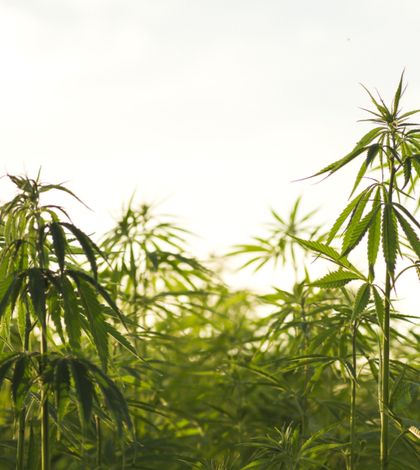The company that wants to pump underground water out of the Mojave Desert has entered into a joint venture that could create one of the largest hemp farms in California.
Cadiz Inc., the company that for years has wanted to pump groundwater from its desert aquifer in the Mojave Desert to various Southern California water agencies, is getting into the increasingly popular hemp industry.
The Los Angeles-based business recently signed a joint venture agreement with Glass House Farms Inc., a division of California Cannabis Enterprises in Long Beach, one of the largest cannabis and hemp companies in the United States.
The joint venture will be called SoCal Hemp Co., with profits to be divided evenly between the parent companies. SoCal Hemp will grow organic, industrial hemp on the 9,600 acres at the Cadiz Ranch near Twentynine Palms.
That property, which includes Cadiz’s aquifer, is in unincorporated San Bernardino County.
At build out, the farm will be the largest in San Bernardino County and potentially the largest in California. It would also create about 300 farmworker jobs to start with and add transportation and logistics jobs over time, making it a major source of employment in the Mojave Desert.
“We have the land and the water and they have the hemp,” said Courtney Degener, Cadiz’s vice president of external affairs. “Now we’ve decided to put both of them together.”
Besides an abundance of land and groundwater, Cadiz Ranch is also near rail, highway and distribution facilities. The desert is an ideal place to grow hemp because, compared to other crops, hemp requires little water.
With the passage of the 2018 U.S. Agricultural Improvement Act, which President Trump signed into law, it became legal to grow and market hemp in all 50 states for the first time since the 1930s.
Hemp is a first cousin of marijuana, but it doesn’t include the chemicals that cause a person to become intoxicated. Instead, it can be used to make multiple products, including rope, textiles, body-care products and other items, and there is a strong demand for them.
Total sales for hemp-derived items in the United States reached approximately $1.1 billion last year, and are expected to more than double that amount by 2020, according to New Frontier Data, an information firm in Washington, D.C. that focuses on the cannabis and hemp industries.
Brightfield Group, a Chicago market and intelligence firm that also specializes in the hemp and cannabis industries, recently reported that sales of hemp-related products are on pace to grow to $23.7 billion by the end of 2027.
The deeds to Cadiz’s desert properties originally included hemp as an approved product, said Scott Slater, the company’s chief executive officer, in the statement announcing the partnership with Glass House Farms.
The joint venture “makes perfect business sense” for Cadiz and its “holistic” land management plans, according to Slater.
“We see tremendous revenue potential for hemp, with the exploding market demand and our competitive advantage of being in California,” Slater said in the statement. “We can cost effectively, and legally, grow hemp outdoors in the sun without the traditional risks of farming in concentrated agricultural environments.”
Slater was out of town last week and not available for further comment.
In June, Glass House Farms began an experimental program, growing hemp on five acres at the Cadiz Ranch. The plan is to expand that program to 60 acres, then to 1,280 acres and finally to about 9,600 acres, during the next three years.
Although still in its early stages, the pilot program has “buoyed confidence” that hemp can be grown on the site for commercial purposes, according to Cadiz.
This is not Cadiz’s first agricultural venture. It has grown grapes, citrus and other crops on the ranch site for more than 25 years, but the company is best known for its proposed Cadiz Valley Water Conservation, Recovery and Storage project.
That proposal, which has met strong resistance from the state, would pump billions of gallons of water every year from Cadiz’s desert aquifer to various Southern California markets, including parts of San Bernardino County.
The project would pump enough water to serve about 400,000 people. Opponents say the practice would take away the water supply used by desert wildlife, and that it would remove water from the ground too quickly.
While it’s too soon to talk numbers, SoCal Hemp could provide a boost to the local economy, said Jay Prag, professor of economics at Claremont Graduate University’s Drucker School of Management. “It’s a very good use of the land and the resources in that part of the desert, because it doesn’t take that much to grow hemp,” Prag said. “It could absolutely bring some jobs to that area, at a time when California and the Inland Empire aren’t adding a lot of agricultural jobs.”
 IE Business Daily Business news for the Inland Empire.
IE Business Daily Business news for the Inland Empire.


